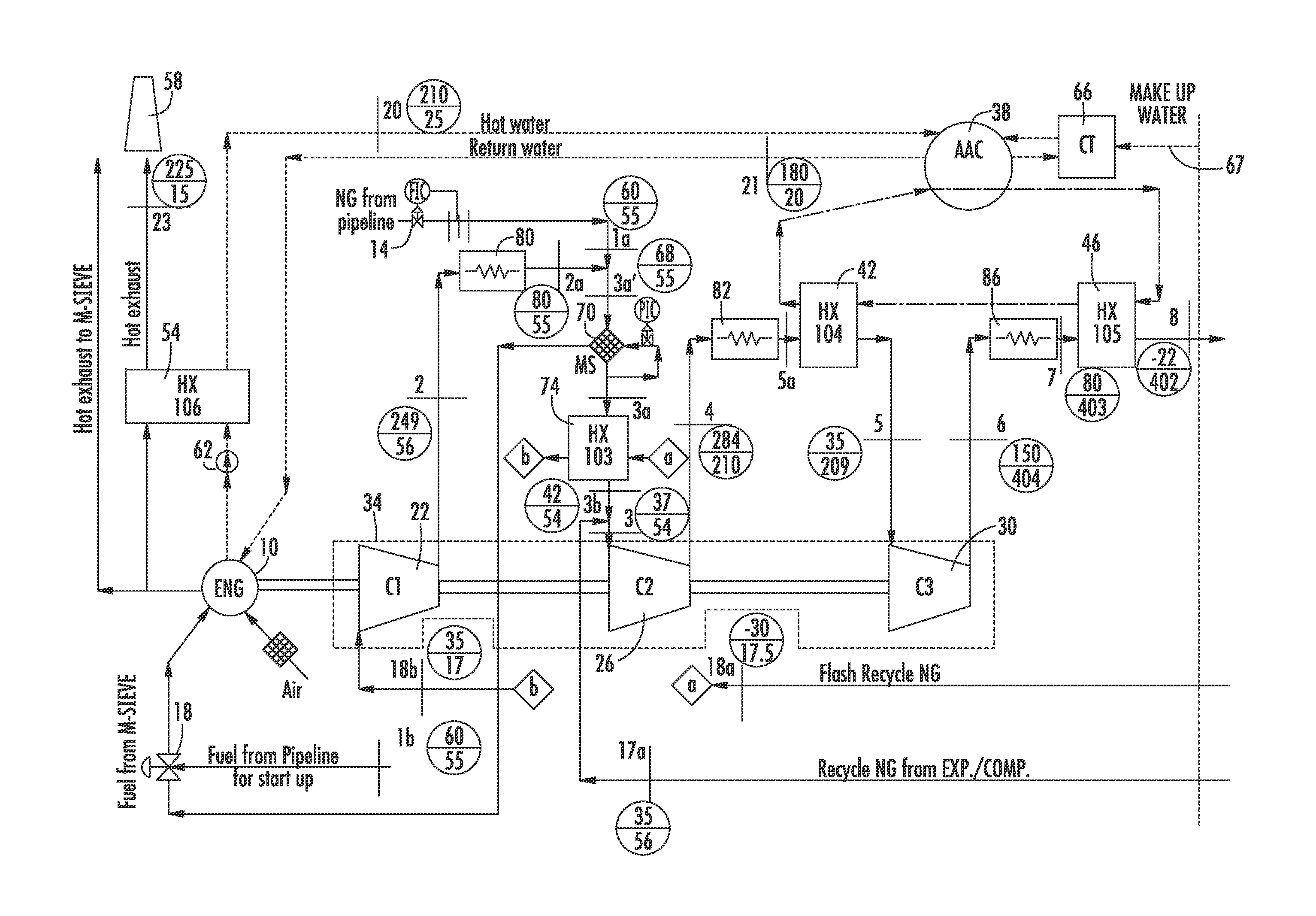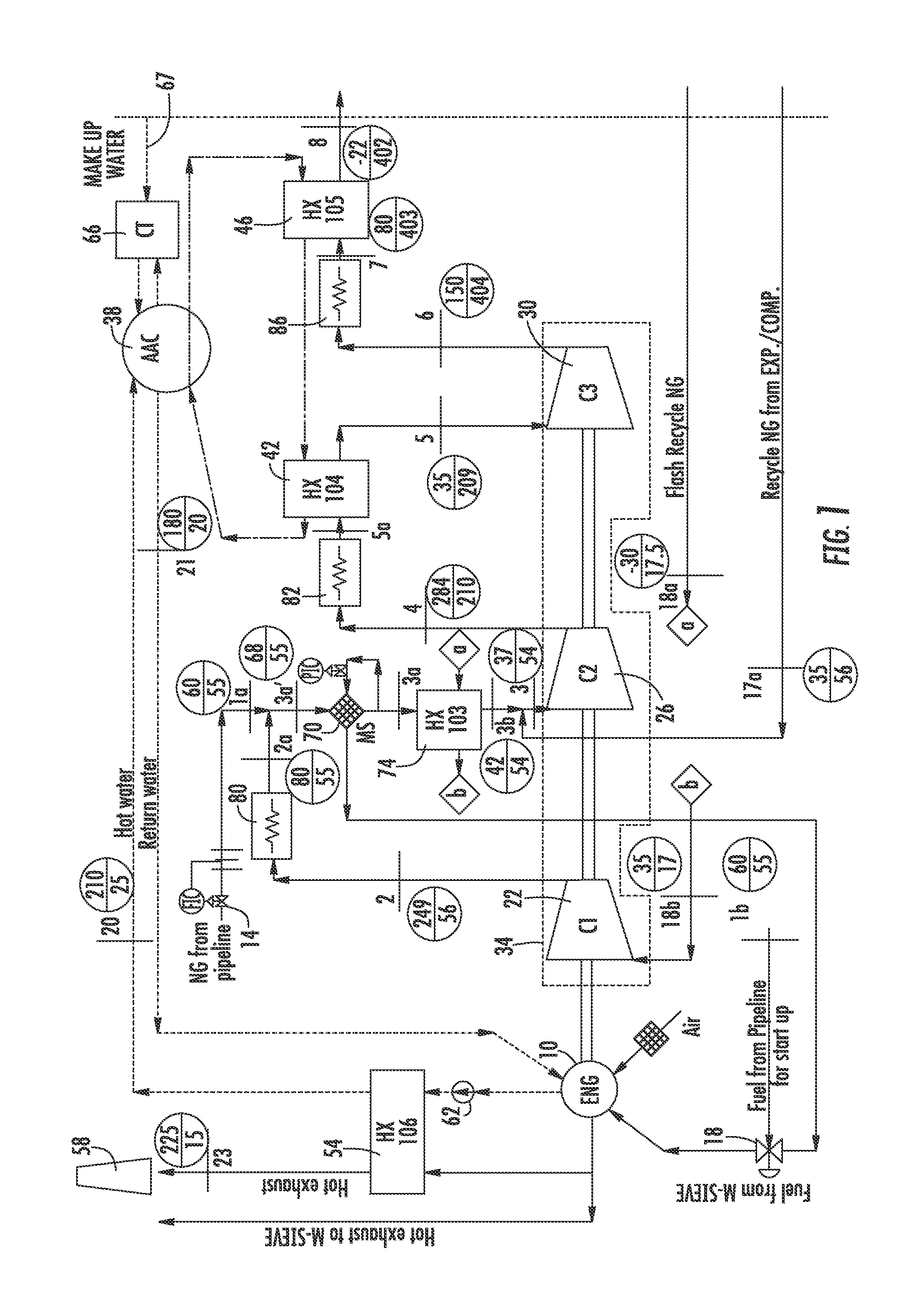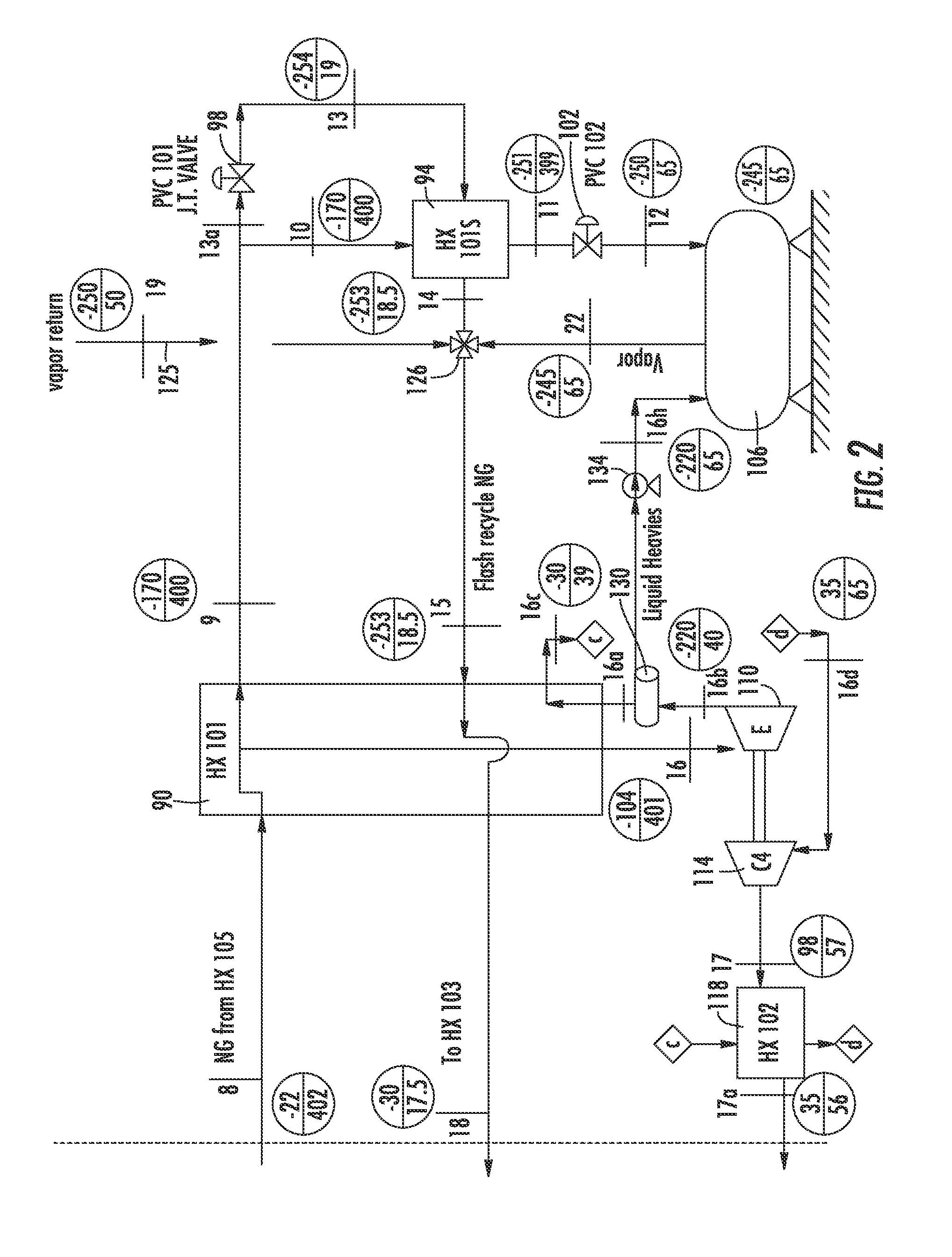Method and system for the small-scale production of liquified natural gas (LNG) and cold compressed gas (CCNG) from low-pressure natural gas
a low-pressure natural gas and liquefied gas technology, applied in the field of gas liquefaction, can solve the problems of increasing no commercially viable small-scale liquefied natural gas production facilities anywhere in the world, and the cost of lng to the end user is not high enough, so as to achieve the effect of reducing the cost of production and reducing the cost of large-scale production
- Summary
- Abstract
- Description
- Claims
- Application Information
AI Technical Summary
Benefits of technology
Problems solved by technology
Method used
Image
Examples
Embodiment Construction
[0024]The disclosed process provides a means to produce, at small-scales, LNG at or near the vehicles that will be served by the facility. With on-site liquefaction inherent in the disclosed process, the LNG product need not be as cold as the LNG produced at distant, large-scale production plants. “Warmer” LNG requires less energy input than colder LNG, and LNG made at (or near) the vehicle fleet it serves will require less energy input for transporting the product. Similarly, if the main customer base is CNG vehicles, then the LNG used to dispense CNG (that system being known as L / CNG) need not be any colder than required for adequately storing and pumping the LNG to the pressure needed for CNG dispensing.
[0025]The inventor, who is an expert in this field, is not aware of any existing, commercially viable Small-Scale LNG plants anywhere in the world and is not aware of any CCNG production, storage or dispensing systems or of a CNG dispensing systems that includes CCNG production an...
PUM
 Login to View More
Login to View More Abstract
Description
Claims
Application Information
 Login to View More
Login to View More - R&D
- Intellectual Property
- Life Sciences
- Materials
- Tech Scout
- Unparalleled Data Quality
- Higher Quality Content
- 60% Fewer Hallucinations
Browse by: Latest US Patents, China's latest patents, Technical Efficacy Thesaurus, Application Domain, Technology Topic, Popular Technical Reports.
© 2025 PatSnap. All rights reserved.Legal|Privacy policy|Modern Slavery Act Transparency Statement|Sitemap|About US| Contact US: help@patsnap.com



